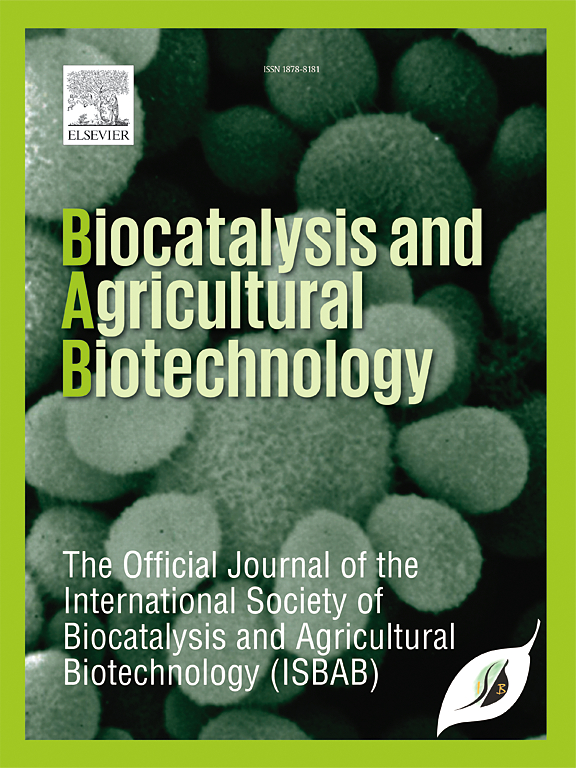Transesterification of castor oil and ethanol using green catalyst for biodiesel production through Box-Behnken design
IF 3.4
Q2 BIOTECHNOLOGY & APPLIED MICROBIOLOGY
引用次数: 0
Abstract
Globally, there's a noticeable decline in environmental pollution, largely attributed to the widespread adoption of biodiesel a sustainable alternative fuel derived from vegetable oils and animal fats. This study explores an innovative approach where castor oil and ethanol undergo trans-esterification using waste potato peels infused with calcium oxide (CaO) as a catalyst. The process begins with calcining the potato peels at 600 °C for 4 h, followed by combining the residual peels with CaO and subjecting them to further calcination at 900 °C for 3 h. SEM-EDX analysis confirms the successful impregnation of CaO onto the potato peels, resulting in CaO-treated potato peels (CaO-CPP) with a smoother surface area compared to untreated CaO. Gas chromatography mass spectrometry is employed to analyze the fatty acid esters within biodiesel. Establishing biodiesel as a viable alternative fuel involves evaluating various parameters, including specific gravity, moisture content, kinematic viscosity, saponification value, iodine value, flash point, and heat content. The characteristics of biodiesel suggest that, with appropriate adjustments, biodiesel derived from castor seed oil holds promise as an alternative fuel source. Response Surface Methodology is utilized to optimize the operational parameters of the production process. Through a Box-Behnken Design, the impact of catalyst type, concentration, and the ratio of oil to ethanol on biodiesel yield is examined. Statistical analysis reveals the model's high significance, with an R2 value of 0.9930. Optimal conditions are achieved within 60 min, resulting in a 94.17% biodiesel yield at a 1:9 oil to ethanol molar ratio, with a 3.5% catalyst concentration by weight, and a temperature of 65 °C. Impregnated CaO utilizing CPP (CaO-CPP) emerges as a promising catalyst for heterogeneous bases, thanks to its robust catalytic activity, which significantly facilitates the transesterification process.

求助全文
约1分钟内获得全文
求助全文
来源期刊

Biocatalysis and agricultural biotechnology
Agricultural and Biological Sciences-Agronomy and Crop Science
CiteScore
7.70
自引率
2.50%
发文量
308
审稿时长
48 days
期刊介绍:
Biocatalysis and Agricultural Biotechnology is the official journal of the International Society of Biocatalysis and Agricultural Biotechnology (ISBAB). The journal publishes high quality articles especially in the science and technology of biocatalysis, bioprocesses, agricultural biotechnology, biomedical biotechnology, and, if appropriate, from other related areas of biotechnology. The journal will publish peer-reviewed basic and applied research papers, authoritative reviews, and feature articles. The scope of the journal encompasses the research, industrial, and commercial aspects of biotechnology, including the areas of: biocatalysis; bioprocesses; food and agriculture; genetic engineering; molecular biology; healthcare and pharmaceuticals; biofuels; genomics; nanotechnology; environment and biodiversity; and bioremediation.
 求助内容:
求助内容: 应助结果提醒方式:
应助结果提醒方式:


